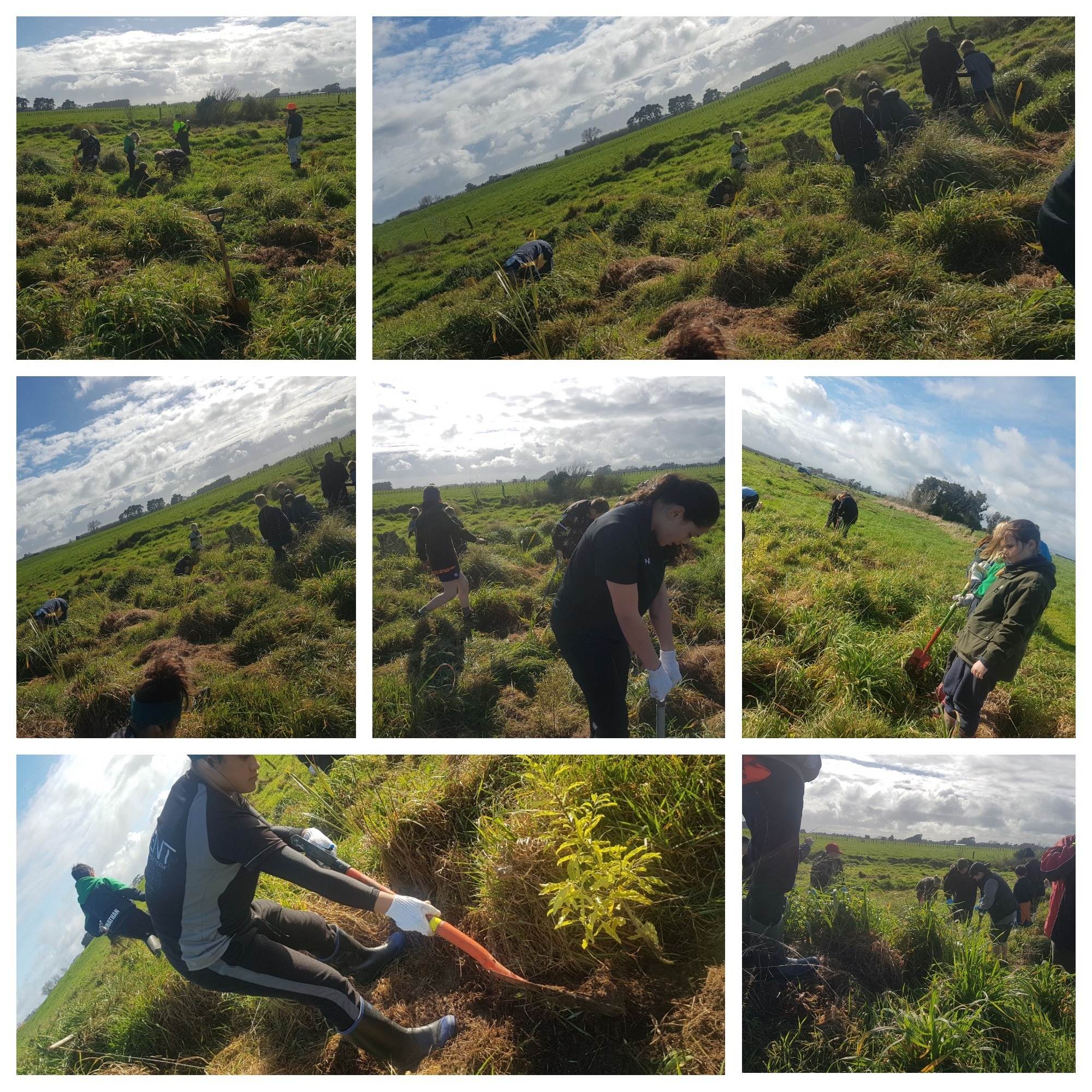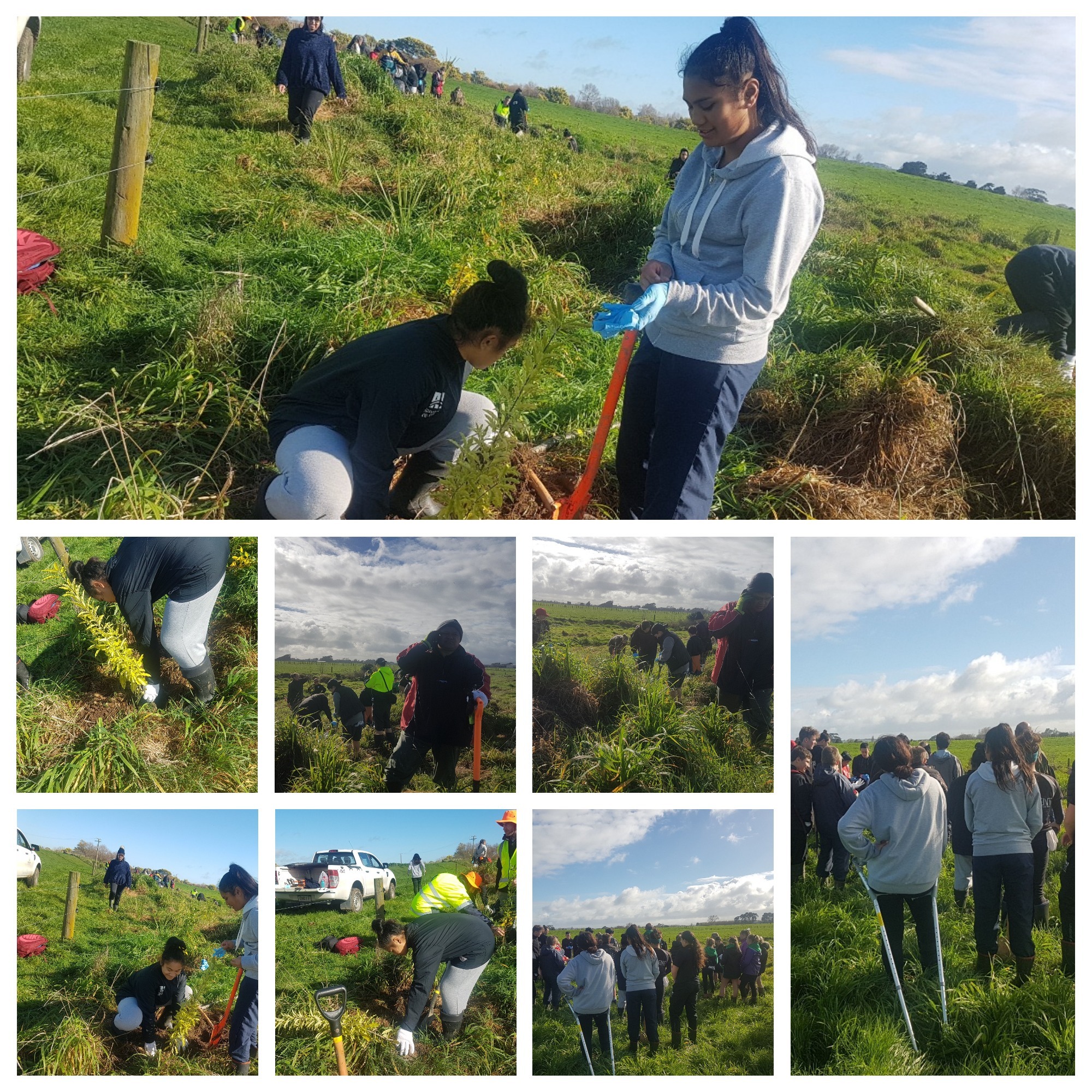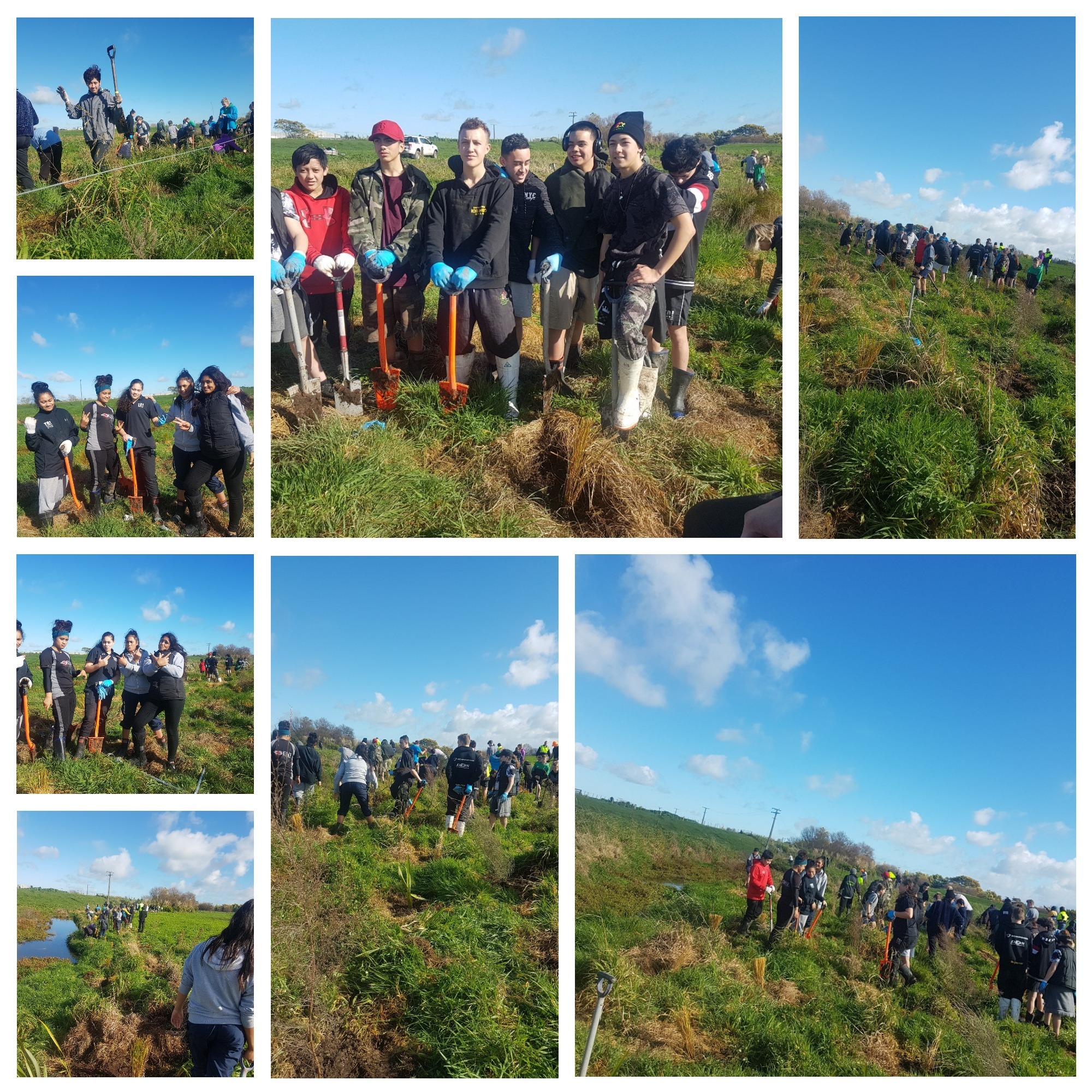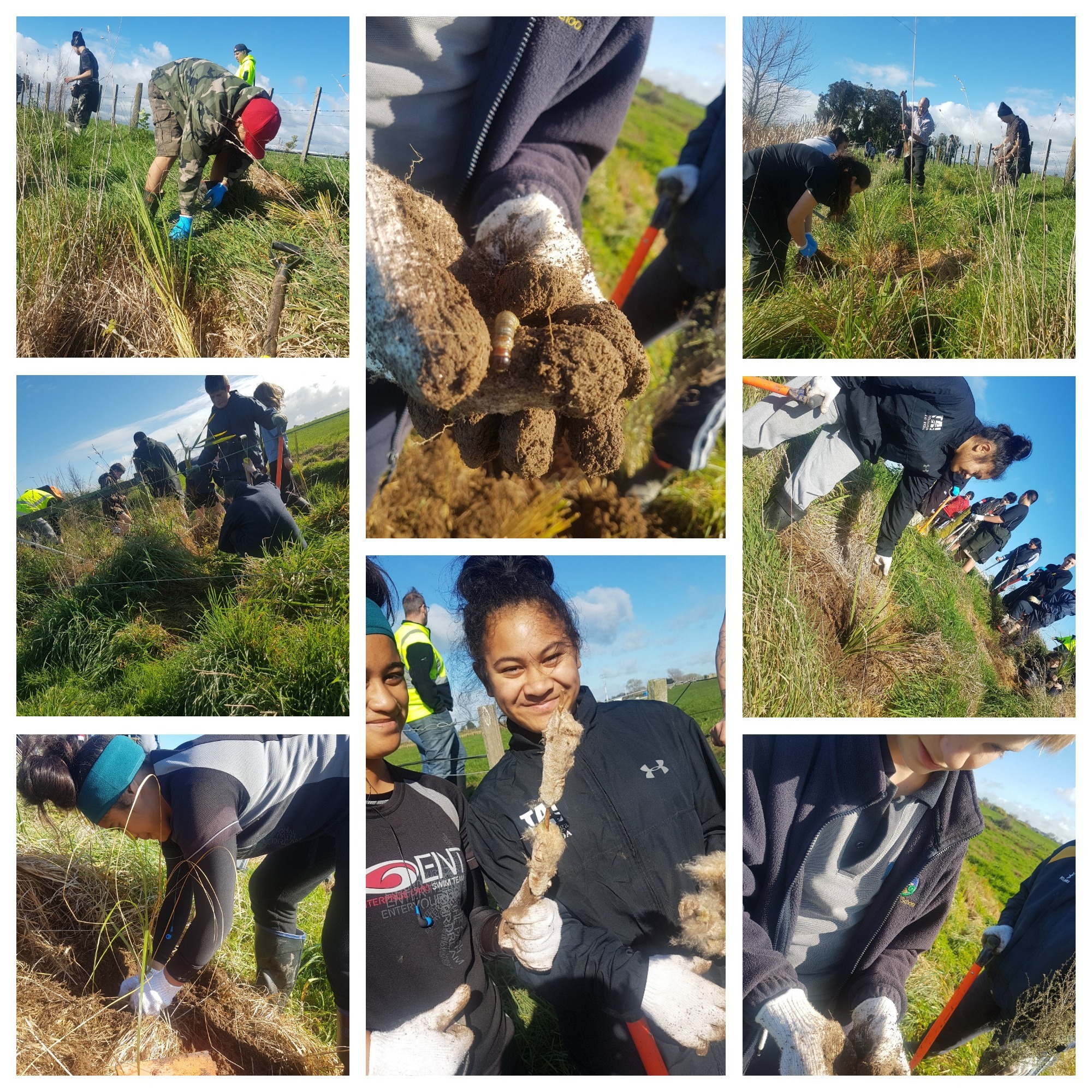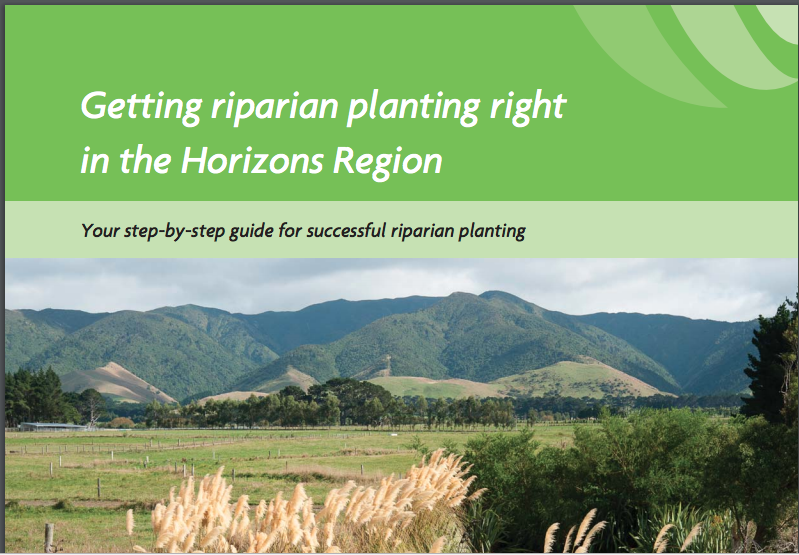Riparian Planting Manawatu
Year 9 -10 rangatahi got down and dirty planting at the AFFCO-RYEBURN Farms. Kindly sponsored by Oroua River Catchment Care Group, Affco Manawatu, Horizons RC, Manawatu District Council and Ngati Kauwhata Iwi, our students joined with scores of community members to engage in riparian planting.
Students were provided with a good overview from the Oroua River Catchment Care Group and Affco river care group on activities undertaken over the past years.
Stuff NZ reports in their June 2017 article that 'stream planting is the biggest act farmers could do improve Waikato's water quality, DairyNZ water scientist Tom Stephens says: “The plants alongside streams and other waterways provided shade which lowered the water temperature and created a more healthy environment for insects” Stephens told farmers at the DairyNZ Farmers' Forum at Lye Farm near Newstead.
Horizons Regional Council reports in their Community Guide to Stream Restoration that the 'Manawatu Region is home to 17 different species of native freshwater fish and numerous freshwater invertebrates. Restoring areas by planting native trees along our streams and rivers will help to:
Improve water quality
Reduce stream bank erosion
Create habitat for aquatic life and birds
Improve the food source for aquatic life
Reduce water temperature fluctuations'
One of the aims of this event was enabling the community to plant endemic plants, that are not invasive, back into the area. Our youth learnt that it is important they choose the right plants for the specified area for successful plant growth. If an area is wet and boggy or close to the water’s edge and could get flooded, then they needed to plant “wet feet types” (flax, sedges, toetoe). All native trees and shrubs were to be planted further back from the stream where the ground is less saturated.
Horizons Regional Council publication Getting things right in riparian planting.


